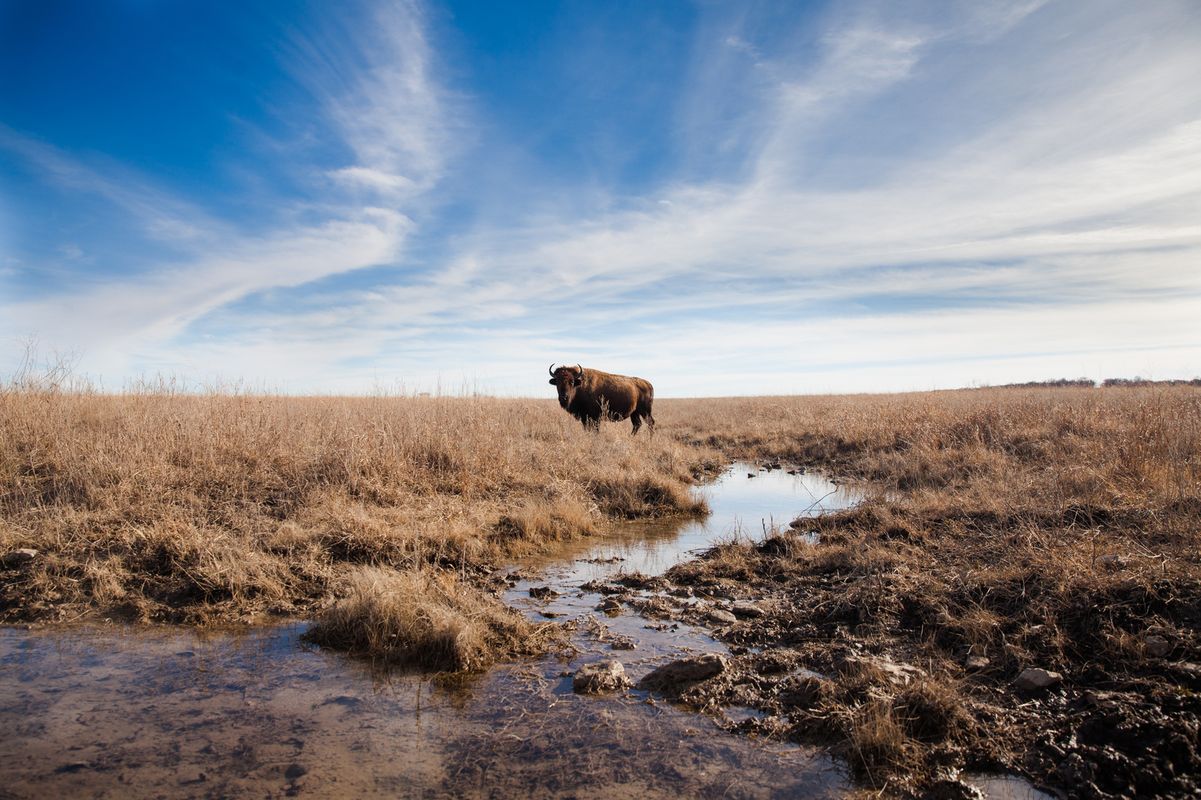Joseph H. Williams Tallgrass Prairie Preserve
Joseph H. Williams Tallgrass Prairie Preserve
The Joseph H. Williams Tallgrass Prairie Preserve near Pawhuska is the largest protected area of tallgrass prairie in the world, spanning 40,000 acres. Tallgrass prairie is a complex environment harboring a rich diversity of plants and animals. The current 40,000-acre expanse began with an initial purchase of the historic Barnard Ranch in 1989 by The Nature Conservancy.
Enjoy a drive on the scenic route, which takes visitors through the heart of the Tallgrass Prairie Preserve and through adjacent private ranches. Starting and ending in Pawhuska, the complete drive is approximately 50 miles, and takes about two hours at a leisurely pace with time for stopping.
Tallgrass Prairie Preserve is a haven for watchable wildlife. The diversity of grassland and forest is home to over 210 species of birds. Other wildlife includes white-tailed deer, bobcats, armadillos, beavers, woodchucks, badgers, coyotes and more. True stars of the Tallgrass Prairie Preserve, over 2,100 American bison make up one of the largest private herds in the country. These iconic bison can often be photographed and observed from the road.
Drive the 15 miles of road through the bison unit and stop by the visitor center to learn more about this ecosystem. Choose from four scenic turnouts, picnic locations or a two-mile self-guided nature trail.
Please observe the following guidelines when visiting: Bison are dangerous. Only observe and photograph them from your car. Stick to the trail. Don't collect plants, insects or other species or disturb the soil, rocks, artifacts or scientific research markers. Dogs are not allowed at all. The preserve harbors ground-nesting birds and other wildlife that are extremely sensitive to the disturbance of a dog's presence. No bicycles or motorized vehicles are allowed as they trample native plants and research sites. No hunting, camping or campfires are allowed in the preserve. Bring a trash bag and leave no litter along the trails. Please report any problems you see in the preserve that do not follow these rules including camping, plant removal, hunting and off-road vehicle damage.
The prairie puts on a different show for every season and each has its own unique beauty:
Spring/Summer:
By mid-May, 600-700 bison calves are frolicking the prairie.
Mid‑May through mid‑June, wildflowers cover the fields with blankets of color. Though wildflowers bloom throughout the warm months, they peak in spring, with another fine showing late summer.
Prairie chickens boom at sunrise from late March through early May.
During the warm months, migrating neotropical species, such as the Dickcissel and Scissor‑tailed flycatcher, are seen frequently.
Signature grasses such as big bluestem and switchgrass appear in April, begin producing seed in late July, and continue to grow through September.
Fall/Winter:
By September the big bluestem and switchgrass reach heights of 6 to 8 feet with a few patches stretching to 10 feet. When trees turn to their rich autumn colors, so do the grasses.
Rough‑legged and Red‑tailed Hawks, Northern Harriers and both Bald and Golden Eagles are common sights during the fall and winter. You also may see deer, coyotes or bobcats roaming the prairie.
Photos










Videos



Pricing
There is no charge for admittance.While every effort has been made to ensure the accuracy of the pricing listed above, prices are subject to change without notice.








